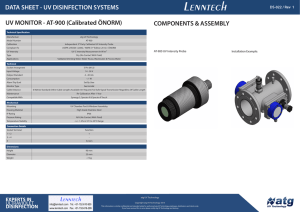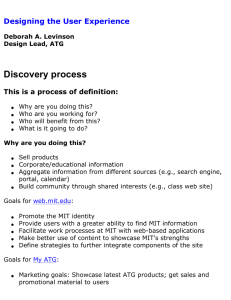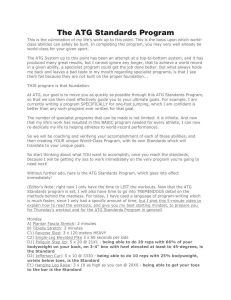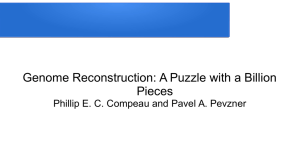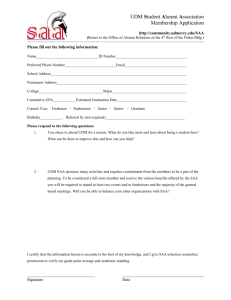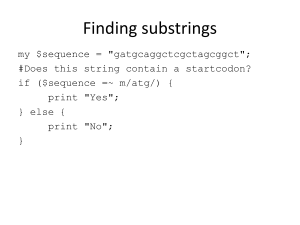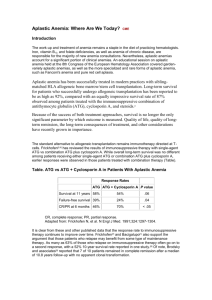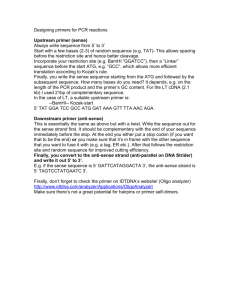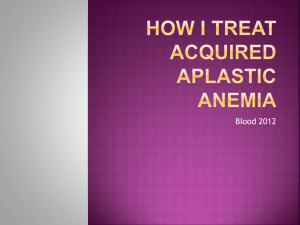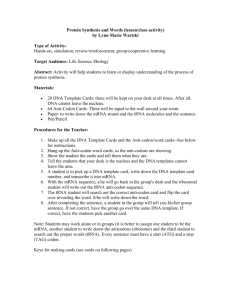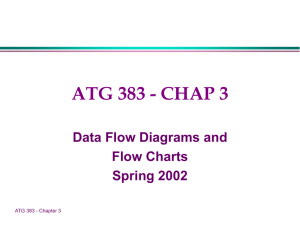Evaluation of Immunotherapy in Pediatric with Severe Aplastic
advertisement
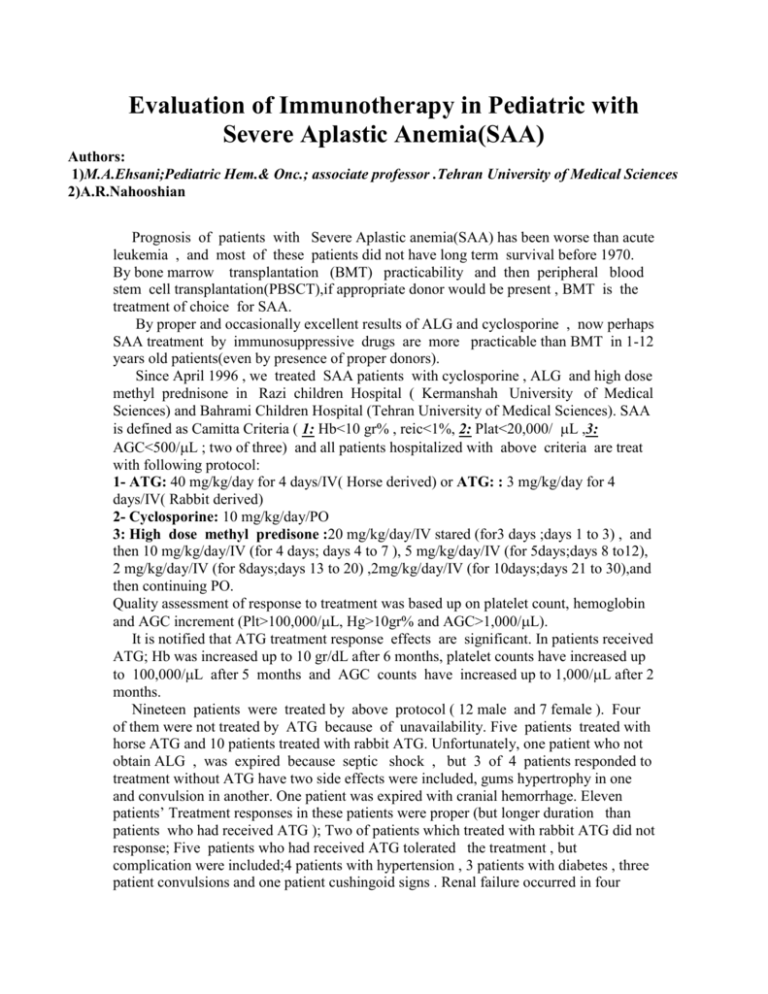
Evaluation of Immunotherapy in Pediatric with Severe Aplastic Anemia(SAA) Authors: 1)M.A.Ehsani;Pediatric Hem.& Onc.; associate professor .Tehran University of Medical Sciences 2)A.R.Nahooshian Prognosis of patients with Severe Aplastic anemia(SAA) has been worse than acute leukemia , and most of these patients did not have long term survival before 1970. By bone marrow transplantation (BMT) practicability and then peripheral blood stem cell transplantation(PBSCT),if appropriate donor would be present , BMT is the treatment of choice for SAA. By proper and occasionally excellent results of ALG and cyclosporine , now perhaps SAA treatment by immunosuppressive drugs are more practicable than BMT in 1-12 years old patients(even by presence of proper donors). Since April 1996 , we treated SAA patients with cyclosporine , ALG and high dose methyl prednisone in Razi children Hospital ( Kermanshah University of Medical Sciences) and Bahrami Children Hospital (Tehran University of Medical Sciences). SAA is defined as Camitta Criteria ( 1: Hb<10 gr% , reic<1%, 2: Plat<20,000/ L ,3: AGC<500/L ; two of three) and all patients hospitalized with above criteria are treat with following protocol: 1- ATG: 40 mg/kg/day for 4 days/IV( Horse derived) or ATG: : 3 mg/kg/day for 4 days/IV( Rabbit derived) 2- Cyclosporine: 10 mg/kg/day/PO 3: High dose methyl predisone :20 mg/kg/day/IV stared (for3 days ;days 1 to 3) , and then 10 mg/kg/day/IV (for 4 days; days 4 to 7 ), 5 mg/kg/day/IV (for 5days;days 8 to12), 2 mg/kg/day/IV (for 8days;days 13 to 20) ,2mg/kg/day/IV (for 10days;days 21 to 30),and then continuing PO. Quality assessment of response to treatment was based up on platelet count, hemoglobin and AGC increment (Plt>100,000/L, Hg>10gr% and AGC>1,000/L). It is notified that ATG treatment response effects are significant. In patients received ATG; Hb was increased up to 10 gr/dL after 6 months, platelet counts have increased up to 100,000/L after 5 months and AGC counts have increased up to 1,000/L after 2 months. Nineteen patients were treated by above protocol ( 12 male and 7 female ). Four of them were not treated by ATG because of unavailability. Five patients treated with horse ATG and 10 patients treated with rabbit ATG. Unfortunately, one patient who not obtain ALG , was expired because septic shock , but 3 of 4 patients responded to treatment without ATG have two side effects were included, gums hypertrophy in one and convulsion in another. One patient was expired with cranial hemorrhage. Eleven patients’ Treatment responses in these patients were proper (but longer duration than patients who had received ATG ); Two of patients which treated with rabbit ATG did not response; Five patients who had received ATG tolerated the treatment , but complication were included;4 patients with hypertension , 3 patients with diabetes , three patient convulsions and one patient cushingoid signs . Renal failure occurred in four patients and after the reduction dose of Cyclosporine the renal function became normal. Six patient treated with the second dose of ATG. In spite of the complications , responses were excellent. As two cases were not respond to rabbit-ATG our cases is not enough to conclude that Horse-ATG is more effective as rabbit-ATG. Although statistically nineteen patients are few , but treatment response assessments in all patients ( other than two patient who was expired ) show that mentioned treatment was a successful method for treatment of patients with severe aplastic anemia.
